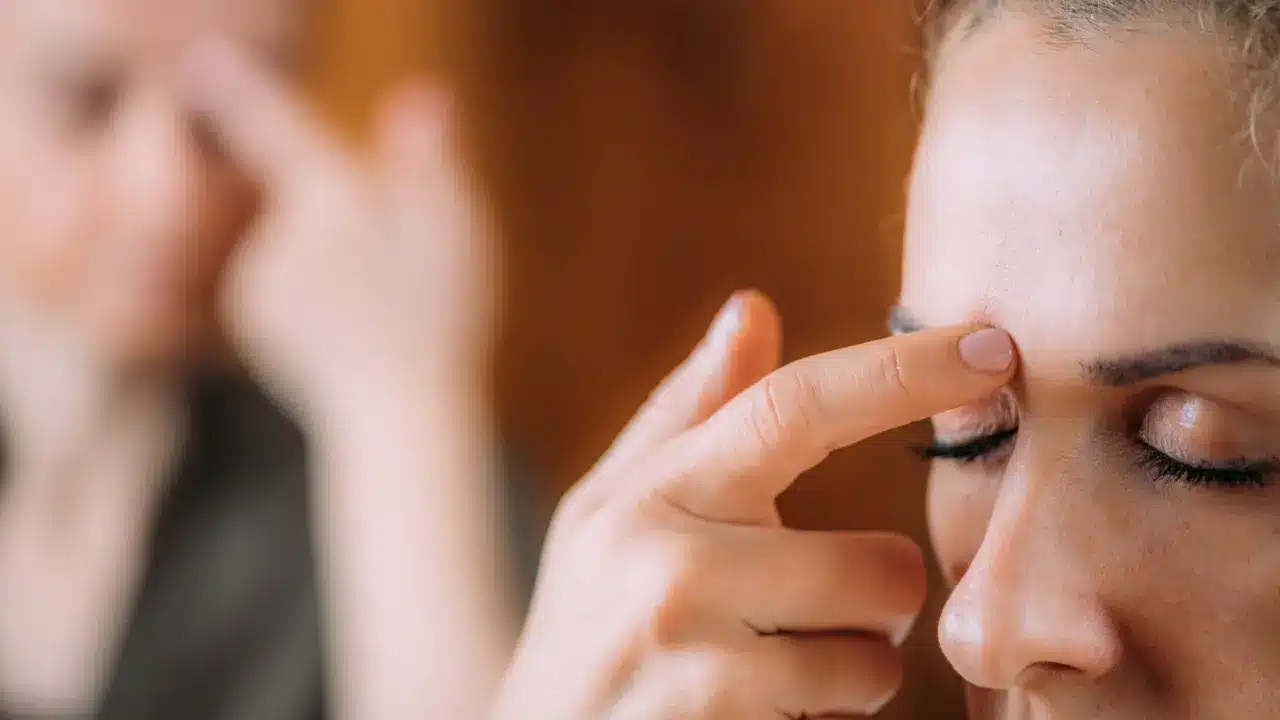It’s no secret that anxiety and stress can negatively affect a person’s overall comfort, well-being, and quality of life. But stress relief is important not only for psychological reasons—for feeling more at ease, emotionally. It’s also vitally important for maintaining the health of the body.
Chronic stress and anxiety can create harmful imbalances in the brain/nervous system, endocrine system, cardiovascular system, digestive system, immune system, and respiratory system. In fact, experts estimate that 75% to 90% of all visits to a doctor’s office are for stress-related ailments or concerns. This means that at least three out of every four consultations with a medical professional revolve around a stress-related issue.
This highlights the importance of protecting both body and mind from the effects of chronic stress and anxiety. Finding ways to skillfully manage, transform, and release stress before it escalates into serious health consequences—is the kind and intelligent thing to do.
Among various stress-relief techniques, the Emotional Freedom Technique (aka tapping) is one that’s relatively simple and can be a profoundly effective way to relieve anxiety.
For people who struggle with anxiety and need a solution in their everyday lives, this article provides key information about tapping, by answering questions such as: How does tapping work? What’s the science behind tapping? And how exactly does one use tapping to relieve anxiety?
What is Tapping?
The Emotional Freedom Technique—also known as EFT or tapping—involves physically tapping on a series of acupressure points while mentally focusing on a stressful or anxiety-producing issue. This facilitates the release of fear, anxiety, and stress related to the issue.
Basically, therapeutic tapping is a way to address emotional issues like chronic stress or anxiety by bringing them to the surface of the mind, fully acknowledging and accepting them, and then releasing them.
EFT skillfully combines aspects of Chinese medicine, neuroscience, and psychology (Cognitive Behavioral Therapy and Exposure Therapy) to disrupt the energy of stressful thoughts and beliefs. Tapping facilitates the dissolution of the entrenched and looping emotional patterns that are at the root of the anxiety. This, in turn, helps rewire habitual reactions to stressful thoughts or experiences going forward. New ways of perceiving, thinking, and acting become possible.
The History of EFT Tapping
The Emotional Freedom Technique was developed in 1995 by Gary Craig, a Stanford engineering graduate, certified master practitioner of neurolinguistic programming, and student of energy psychology. In creating EFT, Mr. Craig was inspired by Thought Field Therapy—an energy-based form of psychotherapy designed to reduce symptoms of psychological distress by changing the way that energy flows in the body.
Roots of EFT in Chinese Medicine
The therapeutic protocols of tapping are rooted in the acupuncture meridian system of Chinese Medicine. Meridians are channels of life-force energy flowing in the subtle body.
When this flow of energy through the meridians is balanced and harmonious, a person experiences physical and emotional well-being. When the flow is blocked, erratic or depleted, they experience physical or emotional disease. Like acupressure and acupuncture, tapping is a practice that can help maintain a healthy flow of life-force energy through the meridian system.
Pools of energy along the meridians are called acupuncture points. While Chinese medicine utilizes hundreds of acupuncture points, the tapping technique uses just nine points. These nine points are stimulated via gentle tapping with the fingertips.

Is Tapping Scientifically Proven?
Tapping has been scientifically proven to relieve psychological distress, reduce cortisol levels, improve anxiety, treat PTSD in veterans, and improve various physiological markers of health.
Recent research has also demonstrated the effectiveness of tapping on neural correlates of emotional regulation, with great potential for reducing anxiety symptoms. The power of EFT to reduce anxiety has to do, at least in part, with its ability to affect the amygdala—a section of the brain’s limbic system (which also includes the hypothalamus, thalamus, and hippocampus).
The amygdala is the integrative center for emotions, emotional behavior, and motivation. It initiates the body’s protective reaction to fear—the fight-flight-freeze response of the sympathetic nervous system. In this sense, the amygdala is something like the body’s personal alarm system.
When a person experiences fear or trauma, their amygdala is triggered and their body flooded with cortisol, aka the “stress hormone.” This stress response is meant to keep the body safe from potential danger. But when the nervous system gets stuck in the fight-flight-freeze mode, chronic stress and free-floating anxiety may be the result.
Tapping helps reset the proper relationship between the sympathetic (fight-flight-freeze) and parasympathetic (rest-digest-rejuvenate) parts of the nervous system. It lets the body know that it’s safe to relax; and can also enhance immunity by decreasing the level of stress hormones circulating within the bloodstream.
Does Tapping Work for Anxiety?
The Emotional Freedom Technique—aka tapping—can be an especially excellent technique for people struggling with chronic stress or anxiety. What makes EFT so effective in helping to resolve anxiety?
Chronic stress and anxiety tend to affect not only the mind but also the body. Anxious thoughts and feelings are often linked with physical tensions and agitation: a racing heart, clenched jaw, hyperventilation, sweating, upset stomach, etc.
Because anxiety and stress are body-mind issues, a therapeutic technique that operates at the interface of body and mind has the greatest chance of success. With the help of tapping, anxiety can be released—and creative resources and energy can be more fully accessed.
How to Engage in Tapping to Relieve Anxiety
Here’s how to use the EFT tapping technique to help relieve anxiety.
1. Identify an Issue
The first step is to clearly identify, define, and feel into the issue that you’d like to address. Perhaps the issue is generalized anxiety or chronic stress. Maybe the fear, stress, or anxiety is related to a specific part of your life. For instance, feeling stressed out about your financial situation, or anxious about an illness or injury, or fearful for the wellbeing of a friend or relative.
2. Rank the Current Intensity of the Issue
On a scale of 1-10, how much is the anxiety-producing issue bothering you right now? Write this number down, as you’ll refer back to it later. It’s recommended to find an issue that ranks 5 or more at the beginning of the tapping process.
3. Create a Setup Statement/Affirmation
Once you’ve identified the issue and ranked its intensity, the next step is to create what is called a setup statement—which acknowledges the issue while at the same time affirming something positive about your approach to it. Begin your setup statement with the phrase “even though.” For instance:
- “Even though I’m feeling this anxiety, I deeply and completely accept myself.”
- “Even though I’m anxious about my finances, I deeply and completely accept how I feel.”
- “Even though I’m feeling this anxiety about my physical health, I deeply and completely accept how I feel.”
4. Begin By Tapping the Side of Your Hand
While maintaining a mental focus on the issue that you’ve chosen, use one, two, or all four of the fingers of one of your hands to tap 5-7 times on the outside of your other hand (opposite to your thumb). This point is referred to as the “karate chop point,” and it connects with the acupuncture Small Intestine meridian. It’s the first of the nine points used in EFT.
As you tap, allow your breathing to be deep and slow; and repeat your set-up statement/affirmation out loud, feeling that the words are true.
5. Tap the Remaining Eight Points
In a similar fashion, you’ll now continue to tap the remaining eight meridian points in the EFT protocol—while repeating your reminder phrase of what the issue is that you’re addressing, and your capacity to relate to it skillfully.
Tapping on these meridian points—while focusing on accepting and resolving the negative emotions—activates and balances your body’s life-force energy:
* Inner Edge of Eyebrow (Bladder Meridian). Where the eyebrow and bridge of the nose meet.
* Side of Eye (Gallbladder Meridian). Between the outer edge of the eye and the temple, on the bony ridge.
* Under the Eye (Stomach Meridian). On the bony ridge directly under the center of the eye.
* Under the Nose (Governing Vessel). Directly under the nose and above the upper lip.
* Chin (Conception Vessel). Below the bottom lip on the indented place on the chin.
* Collarbone (Kidney Meridian). An inch below the collarbone and three inches outward from the centerline. Use your entire hand to tap this point.
* Under the Arm (Spleen Meridian). Three to four inches below the armpit on the side of the torso.
* Top of the Head (Governing Vessel). The center of the top of the head, in line with the tips of the ears.
6. Check In With Yourself
Once you’ve tapped 5-7 times on each of the nine points—while repeating your affirmation statement—it’s time to check in with yourself.
On a scale of one to ten, rate the intensity of the stress/anxiety right now. Compare this level to the level that you began with. Have the feelings of stress or anxiety diminished? Or have they stayed the same?
If the anxiety has diminished, that’s wonderful. And if it hasn’t changed, that’s also wonderful. You’ve begun an honest and open-hearted conversation with the feelings of anxiety via the tapping process, which is supporting a deeper understanding of your mind and body. Repeat the tapping sequence once or twice again; or return to it the next day.
Find Your Wellness with Acera Health
While tapping can be a great self-help remedy for anxiety, the healing process can be deepened with professional support.
Acera Health—located in Costa Mesa, Orange County—offers both outpatient and residential treatment for people experiencing anxiety and other mental health challenges.
Our team of compassionate and highly trained counselors and psychologists provide individual and group counseling utilizing a wide range of proven therapeutic modalities—such as cognitive behavioral therapy, dialectical behavior therapy, and trauma therapy—to support you on a path of body-mind-spirit wellness.
Here at Acera Health, we strive to support each individual on their journey of courageously facing and overcoming the obstacles that once created limitations—by shining a light on a pathway of healing and wholeness.
To learn more about Acera Health’s anxiety treatments, contact us today.









